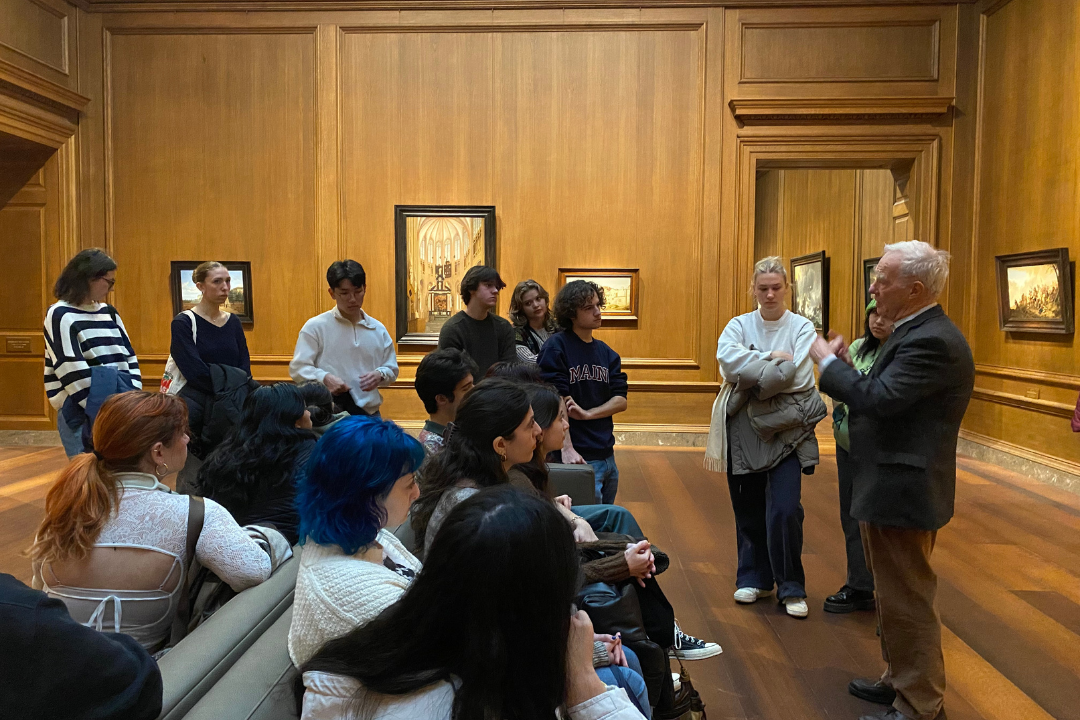Written By: Ruth Campos, Lauren Golla, Walker Szczecina, Jessica Weiss, and Jacob Wilner
On Friday, December 1st, 2023, students from Professor Pollack's Dutch Art UW1020 class had the opportunity to speak with Arthur Wheelock, retired senior curator of Northern Baroque Painting at the National Gallery of Art. Wheelock played a crucial role in acquiring the National Gallery’s Dutch and Flemish painting collection from 1975 until his retirement in 2018. He is most famously known for curating the 1995’s history-making exhibition on Vermeer at the National Gallery of Art, which has shaped the way art historians understand this artist to the present day. Furthermore, Wheelock edited The Dutch Painting of the Seventeenth Century Online Editions for the National Gallery of Art that serves as the foundational research materials for Professor Pollack’s class. Having read and debated many of his writings on Dutch art, students were most excited to meet the man who unwittingly influenced every facet of their time in the course.
As students gathered to hear Arthur Wheelock speak in the Dutch Gallery of the National Gallery’s West Building, they anticipated an illuminative lecture based on his extensive knowledge of the topic. Instead, students were pleasantly surprised as the conversation shifted to a question-and-answer session. A large, plush sofa in the center of the room created a relaxed and personable atmosphere in which students felt comfortable asking intricate questions about their final research projects.Dr. Wheelock provided extensive academic insight into the niche concepts chosen by each student and was astonished by the complex level of understanding students had about Dutch Art. At one point he turned to Professor Pollack and asked, “These students have only been studying Dutch art for three months?” Surrounded by the very artworks they spent the semester researching, the students were fully immersed in the experience.When the meeting began to run beyond its expected ending time, students did not stand up and leave. Instead, they scooched themselves closer to one another on the sofa to get a better view of Dr. Wheelock as he spoke, trying to absorb every word he said.
The world of Art History is all about differences in interpretation. For students like Walker Szczecina, asking Dr. Wheelock specific questions about his interpretations of Dutch Art was an extremely exciting opportunity. Walker researched the subject of Dutch “tronies” this semester, artworks resembling portraits but focused on expressive facial features or dress rather than the subjects themselves. For example, Vermeer’s Girl with a Pearl Earring is classified as a “tronie” in the seventeenth century rather than a portrait of a known individual. Dutch “tronies” are a unique and rather poorly defined category in scholarship to the point where art historians will debate whether pieces should be considered portraits or merely “tronies.” Walker asked Dr. Wheelock his current thoughts on the debate and asked him to respond to comments he made in his decades-old letters in the National Gallery’s Curatorial Records Files. Armed with Dr. Wheelock’s response that many paintings seem to have been misinterpreted as “tronies”, Walker wrote his final paper on redefining and understanding Rembrandt van Rijn’s portraits and “tronies.”
Throughout the semester, Professor Pollack offered her students a multitude of opportunities to delve deeper into the world of Dutch art. The grand finale was getting to meet with the master of Dutch art himself, Arthur Wheelock at The National Gallery of Art. Whether students enrolled in the class solely because it fit into their schedule, or because they had a previous interest in Art History, Professor Pollack’s enthusiasm for Dutch Art and the hands-on experiences she organized ensured that all of her students developed a deeper passion for Art History and writing about art. Thank you, Professor Pollack, for an amazing semester, and thank you, Dr. Wheelock, for your invaluable contributions to the study of seventeenth century Dutch art.


